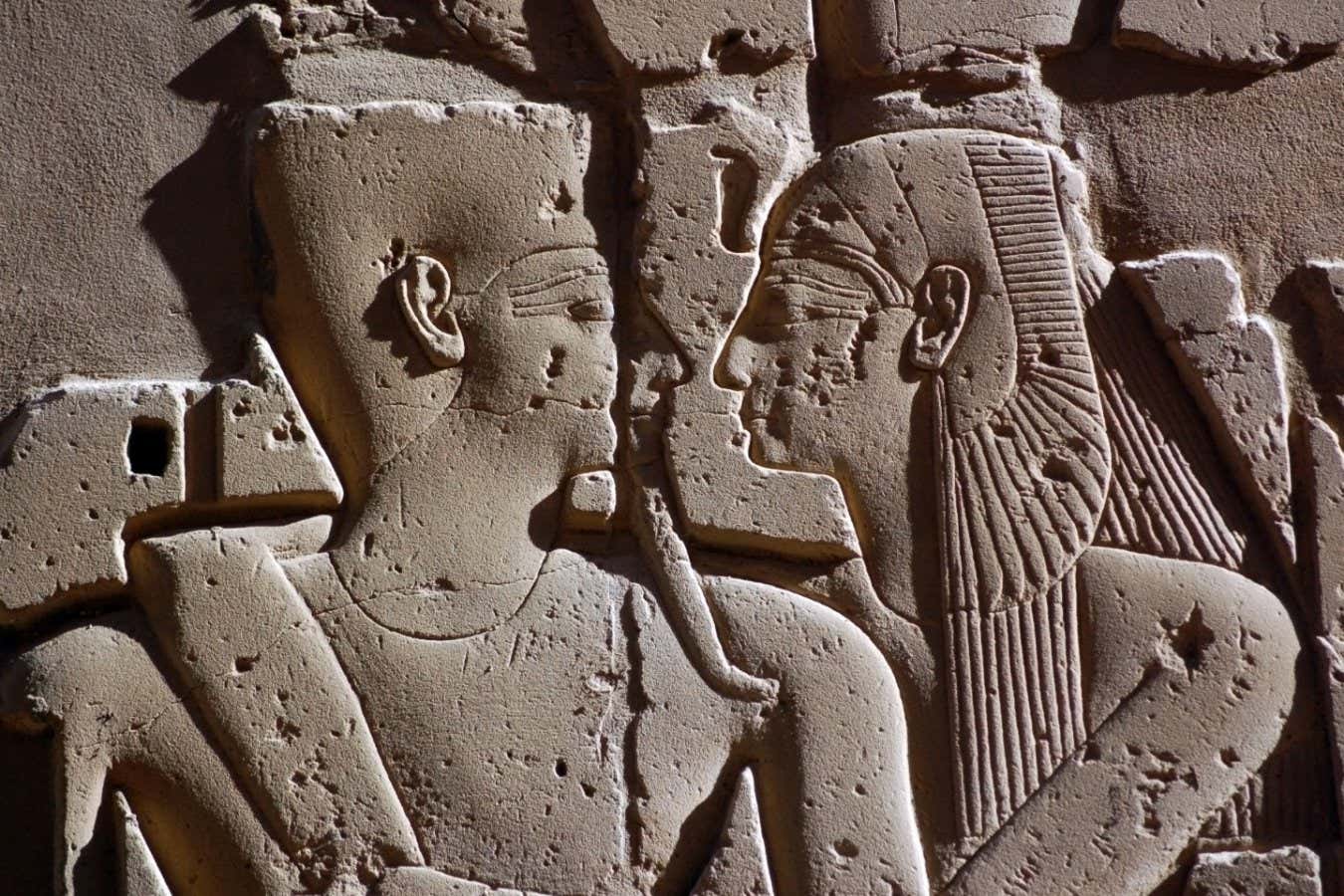Many sources claim sexual kissing spread worldwide from South Asia 3500 years ago, but there is evidence it was practised in ancient Mesopotamia and Egypt much earlier than that
By Michael Le Page
18 May 2023
A carving at the Temple of Luxor in Egypt depicting Pharaoh Ramses II and Queen Nefertari embracing
BasPhoto/Shutterstock
Sexual kissing was practised in ancient Mesopotamia and Egypt at least 4500 years ago, according to a review of ancient texts.
There is considerable debate about when humans began kissing in a romantic way. Many sources say the earliest evidence of sexual kissing is in Sanskrit texts written in what is now India around 3500 years ago. Some researchers have suggested that sexual kissing spread from there around the world, and the conquests of Alexander the Great are often said to have played a part in this spread.
The idea that sexual kissing spread around the world from one place has, in turn, been linked to changes in the spread of diseases that can be transmitted orally. For instance, a paper published last year suggested that the herpes simplex virus 1, which causes cold sores, became much more common because of “the advent of sexual-romantic kissing”.
Advertisement
But evidence from Mesopotamia and Egypt suggests sexual kissing arose independently in many places and didn’t suddenly spread around the world, says Troels Pank Arbøll at the University of Copenhagen in Denmark. “It shows it was known in a much wider area in the ancient world than the people formulating these theories have considered,” he says.
This has been known for decades by the few experts who can read the cuneiform writing system used by several ancient civilisations, but not more widely, says Arbøll. “In the general scientific community, people were not aware of this evidence because it’s not cited anywhere.”
So, Arbøll and his wife, biologist Sophie Lund Rasmussen at the University of Oxford, decided to write a paper describing the overlooked evidence.
